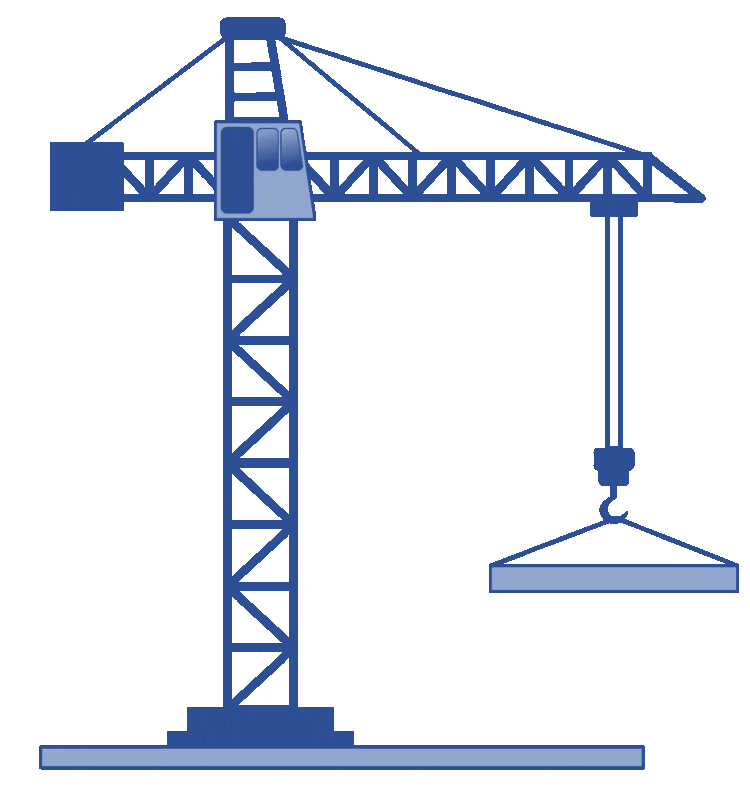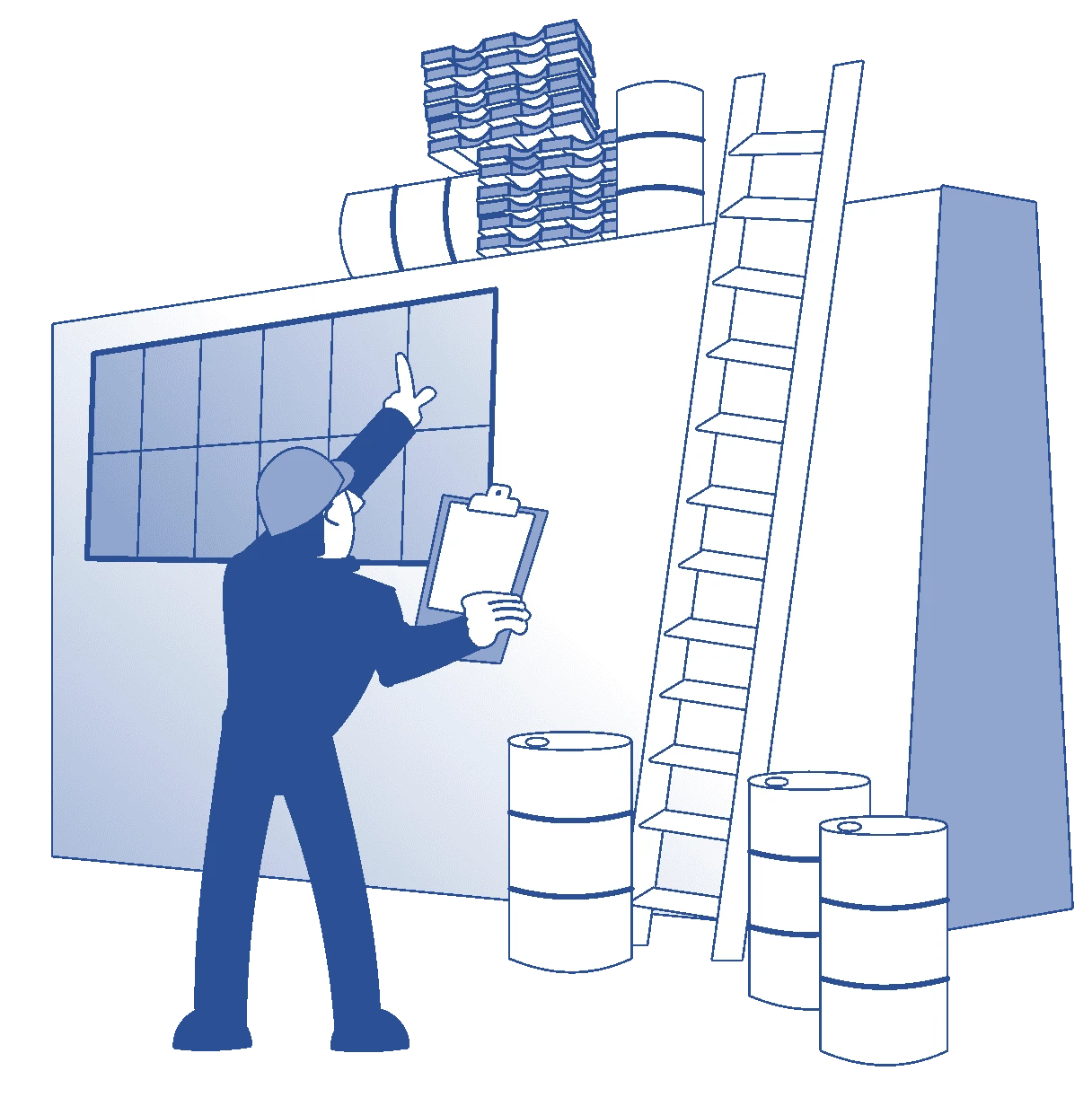Identifying the hazards
When identifying the hazards associated with lifting operations, it is important to:
- Assess risks to people while in operation, such as parts of the lifting equipment trapping, crushing, or coming into contact with people while being operated.
- Assess risks to the environment, including equipment coming into contact with obstructions, such as power lines or roofs, causing damage to both the equipment and the obstruction.
- Assess whether those using the lifting equipment are properly trained.
- Establish how strong the lifting equipment is and whether it can carry the required loads.
- Spot risks of overturning caused by conditions such as unstable ground, insecure fixings, and ineffective counterbalances.
- Establish whether the loads may travel above and over people at any point and, if so, whether appropriate segregation is required.
- Assess how safe it is to access and use the lifting equipment, and determine who can access the area in which it will be used.
- Identify any problems that may be associated with a load of an unusual shape and if alternative measures are required to secure it while it is being lifted.
- Assess the weather conditions while the lift is taking place. For example, high winds could affect the stability of the ground.
Determining who may be at risk
For lifting operations, it is important to consider who may be at risk, including those who are not directly involved in the lift. Some key groups to consider are:
- Operators of lifting equipment.
- Supervisors, signallers, and slingers.
- Others working nearby.
- Members of the public passing near, alongside, or under locations where lifting operations are occurring.
- Site visitors.
Lifting operations often pose a high risk to other employees, site visitors and members of the public because they will not have received sufficient training, instructions, or warnings to make them aware of the dangers present. When carrying out lifting operations in close proximity to these groups, it is especially important to make sure lifting areas are well supervised, protected, and segregated.
Selecting equipment
Equipment failure during a lifting operation can have serious consequences, including property damage and harm to people, so it is essential that suitable equipment is used every time.
For this reason, Regulation 9 of LOLER makes it a legal requirement for any equipment used for a lifting operation to be thoroughly examined and regularly inspected. For more information on this, click here to view the HSE’s ‘Safe use of lifting equipment’ ACOP.
Also, the Provision and Use of Work Equipment Regulations require employers to select lifting equipment that is suitable for the purpose for which it will be used, and LOLER takes this further by requiring them to consider a number of additional points, many of which will be explored below.
Safe working load
LOLER requires all lifting equipment and accessories to be marked with their safe working load (SWL), which is the maximum weight that they can safely lift. Be aware that this can change depending on the location and position of a load.
Sometimes, an item's safe working load may need to be reduced to below its actual limit for safety reasons. This is known as derating.
Derating is done for several reasons, including when working in a high-risk area such as near a live railway line, or when the load includes people. Any derating must be done by a competent person and, when completed, the new rating must be clearly displayed on the equipment.
Additional marking requirements
In addition to its safe working load, lifting equipment must be marked with several other pieces of information:
- Lifting accessories should be marked to identify how and where they can be safely used. This includes information on safe configurations and conditions to avoid, such as high temperatures or corrosive atmospheres.
- Some lifting equipment can be used to carry people. This equipment must be marked to identify it as suitable for lifting people and state the number of people it can carry. Also, equipment that cannot be used to carry people must clearly state this.
Strength and stability
Any lifting equipment and accessories must be strong and stable enough to carry a load without toppling over or breaking under pressure. To ensure this, the weight of a load must not exceed that of the lowest safe working load of a system.
For example, if a hook with a safe working load of 2 tonnes is used to attach a load to a crane with a safe working load of 5 tonnes, the safe working load for that operation is 2 tonnes.
Be aware that the weight of a load includes any accessories that are used, such as hooks, containers and strapping.
Also, the impact of environmental effects, such as strong winds and heavy rain, on the strength and stability of a piece of equipment should be considered.
Destabilisation
When selecting, positioning and installing lifting equipment, factors that can cause destabilisation/loss of stability must be considered:
- In the event of an operator error, the consequences of the load snagging on, or colliding with, other equipment or structures must be considered.
- If there is a risk that an item of lifting equipment could become unstable, it must have accessories which will minimise the likelihood and effect of this, such as a suitable base, anchorage systems and counterbalance weights.
- The strength of the ground surface where the equipment will be placed. Spreader plates may be required on soft ground.
- The stability of the surface the lifting equipment will be placed on and the effect of a lifting operation on it. For example, the added weight of a load and a forklift truck may cause the ground near an excavation to subside.
- The effect of wind and heavy rain on the lifting equipment and load.
- Whether the ground slopes, and by how much. You may need equipment that can be adjusted to operate on uneven ground, flatten the site, or consider a different site altogether.
- The nature of the load, including its size, weight, and shape, and whether the load itself is unstable.
Working environment
The working environment can present a number of risks to the safety of a lifting operation and these potential risks must be taken into account when selecting lifting equipment:
- Some materials behave differently depending on the conditions they are exposed to. As a result, it is important that the material that a piece of lifting equipment is made from, and the environment in which it will be used, are carefully assessed during the selection process.
- Lifting equipment that is likely to be affected by high wind should be marked with the maximum wind speed in which it can operate safely and should not be selected for use in an environment where wind speeds are likely to exceed this maximum.
The operator
When deciding on which lifting equipment to use, it is important to think about who will be operating and working on it.
Operators must be protected from any risks that they may experience in the operating position itself. For example, an operator cab should feature suitable ventilation if it is intended for use in an area that contains harmful dusts or fumes. It is also important to consider the ergonomic design of the operating position, and whether it can be adjusted to suit different operators.
When selecting equipment people are required to work on, consideration must be given as to whether it features measures to minimise the risk of slips, trips and falls. These may include rails to prevent people and objects from falling off and anti-slip flooring. It should also be safely accessible and able to support the weight of the workers and their equipment.
For more information on LOLER and lifting operations, consider taking our great value online LOLER training course:



